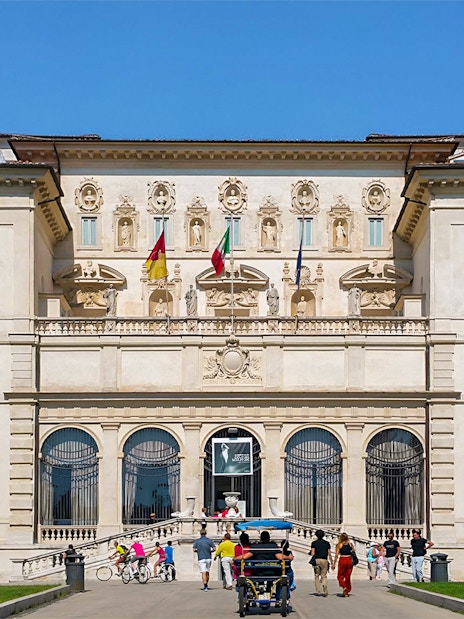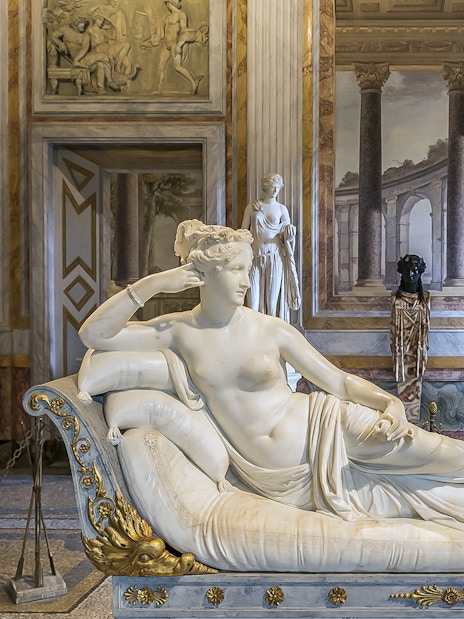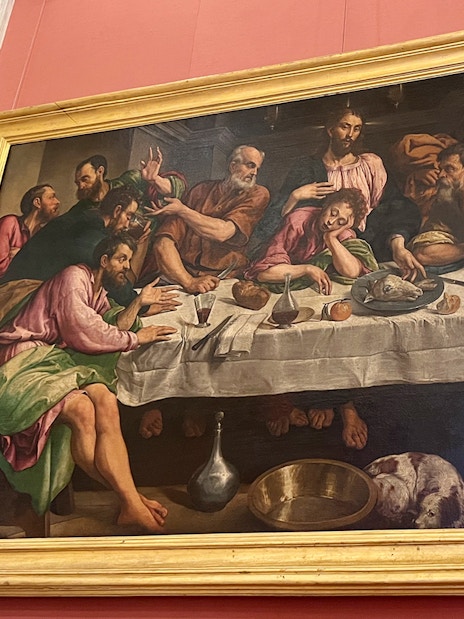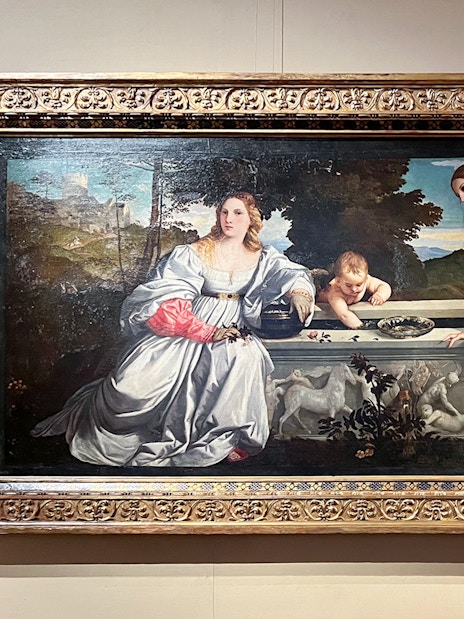- Colosseum
- Vatican Museums
- St. Peter's Basilica
- Rome Pantheon
- Castel Sant Angelo
- Musei Capitolini
- Roman Catacombs Tour
- Altare della Patria
- Doria Pamphilj Gallery
- Bioparco Rome
- Big Bus Rome Hop-on Hop-off Tours
- Palazzo Barberini
- Leonardo da Vinci Museum
- Trevi Fountain Tours
- Rome Underground Tours
- Rome To Tuscany Tours
Borghese Gallery tickets & tours
Headout is an authorized and trusted partner of the venue, offering curated experiences to enjoy this attraction. This is not the venue's website.
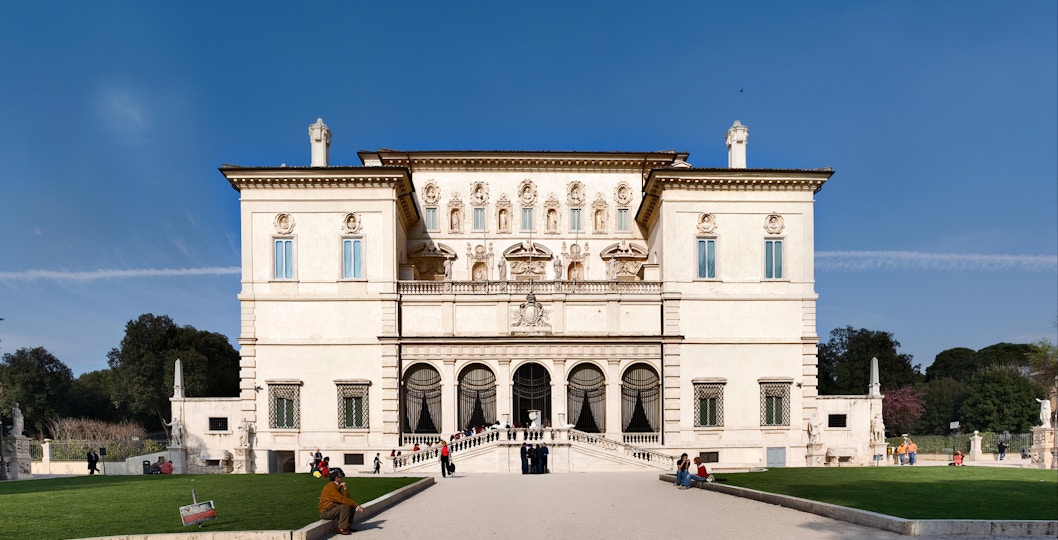
Join this small group tour to skip the ticket lines and have all your questions answered by a guide.
- Get more time to explore one of Rome's most prestigious art galleries, Borghese Gallery, on a guided tour.
- Start this English-guided tour to learn fascinating facts about masterpieces by artists such as Bernini, Caravaggio, Raphael, and Titian.
- This small-group guided tour with only 15 people allows you to gain deeper insight into the collections at the museum.
- Admire Bernini’s legendary sculpture of Apollo and Daphne and feel the energy of David, which tells tales of passion, mythology, and creativity.
- Stroll through the lush landscapes of the Villa Borghese gardens, see its fountains, and enjoy your view of Rome.
Join this small group tour to skip the ticket lines and have all your questions answered by a guide.
- Get more time to explore one of Rome's most prestigious art galleries, Borghese Gallery, on a guided tour.
- Start this English-guided tour to learn fascinating facts about masterpieces by artists such as Bernini, Caravaggio, Raphael, and Titian.
- This small-group guided tour with only 15 people allows you to gain deeper insight into the collections at the museum.
- Admire Bernini’s legendary sculpture of Apollo and Daphne and feel the energy of David, which tells tales of passion, mythology, and creativity.
- Stroll through the lush landscapes of the Villa Borghese gardens, see its fountains, and enjoy your view of Rome.
Inclusions
- Access to the Borghese Gallery
- Art historian guide
- Visit to the Villa Borghese Gardens
- English, Italian, Spanish, Portuguese and French-speaking guide (as per option selected)
- Small group of 15
- Headsets
- This experience is accessible by prams/strollers.
- A paying adult must accompany minors under 18 years of age.
- This experience is not accessible by wheelchair.
- Large backpacks and bags must be checked in.
- These tickets can't be cancelled or rescheduled.
Fast and simple access to the legendary Borghese Gallery!
- Explore Rome's legendary attraction, the Borghese Gallery and admire the
art collections by Caravaggio, Raphael, Titian, Bernini, and Canova. - See paintings by Caravaggio such as David with the Head of Goliath and Boy with a Basket of Fruit.
- There's also Raphael's The Deposition along with sculptures by Bernini, such as David.
- Wander through the Villa Borghese and enjoy its verdant gardens, walking paths and scenic views.
Fast and simple access to the legendary Borghese Gallery!
- Explore Rome's legendary attraction, the Borghese Gallery and admire the
art collections by Caravaggio, Raphael, Titian, Bernini, and Canova. - See paintings by Caravaggio such as David with the Head of Goliath and Boy with a Basket of Fruit.
- There's also Raphael's The Deposition along with sculptures by Bernini, such as David.
- Wander through the Villa Borghese and enjoy its verdant gardens, walking paths and scenic views.
Inclusions
- Timed entry to Borghese Gallery
- Hosted entry (optional)
- Tip: The gallery's masterpieces are accompanied by descriptions that can help you gain a deeper understanding of their significant history.
- Facilities: Wheelchair Accessibility, Cloakroom.
- You may pick up your ticket only on the day of the event at the opening of the checkout counter an hour before the show (until the beginning of the same).
- Entry is free for persons with a disability as well as their accompanying guardian (carry a valid photo ID).
- Luggage storage is mandatory for items such as bags, backpacks, strollers or trolleys, umbrellas, selfie sticks, or other items whose danger or size is assessed by the security staff.
- The experience is restricted for minor guests if they aren't accompanied by an adult.
- Note that the following are not allowed inside the museum: food and beverages, cameras, animals.
- These tickets can't be cancelled or rescheduled.
Combo (Save 9%): Borghese Gallery Tickets + Rome Hop-On Hop-Off Bus Tour
9% off
- With this cost-saving combo, gain access to Borghese Gallery and explore Rome with a 24,48 or 72-hour hop-on hop-off pass.
- See works such as "Boy with a Basket of Fruit" and "The Rape of Proserpina" at one of the most important private art collections.
- Marvel at Titian's "Sacred and Profane Love," featuring 2 women, one representing divine love and the other in earthly attire symbolizing profane love.
- With access to over 11 key stops at a frequency of 10 to 20 mins, explore sites like Largo Argentina, known for its archaeological significance to Caesar.
- Enjoy the convenience of a multilingual audio guide available in five languages, along with access to 4 self-guided walking tours accessible via an app.
- With this cost-saving combo, gain access to Borghese Gallery and explore Rome with a 24,48 or 72-hour hop-on hop-off pass.
- See works such as "Boy with a Basket of Fruit" and "The Rape of Proserpina" at one of the most important private art collections.
- Marvel at Titian's "Sacred and Profane Love," featuring 2 women, one representing divine love and the other in earthly attire symbolizing profane love.
- With access to over 11 key stops at a frequency of 10 to 20 mins, explore sites like Largo Argentina, known for its archaeological significance to Caesar.
- Enjoy the convenience of a multilingual audio guide available in five languages, along with access to 4 self-guided walking tours accessible via an app.
Inclusions
Borghese Gallery
- Entry to the Borghese Gallery
Hop on hop off
- 24/48/72-hr hop-on hop-off tour
- Access to 8 stops across Rome
- Free Wi-Fi onboard
- Onboard audio guide in Italian, French, English, German, and Spanish
- Detailed route map
- 4 self-guided walking tours accessible via app
Red Route
- First bus: 8:30am from Termini Station.
- Last bus: at 7pm.
- Frequency: Approx every 10 to 20 mins.
- Popular stops: Vatican City, Spanish Steps.
Purple Route
- First bus: 9am from Termini Station.
- Last bus: 5pm.
- Frequency: Approx every 10 to 20 mins.
- Popular stops: Circus Maximus, Largo Argentina.
Please click here for the detailed route map and boarding points.
Borghese Gallery
- Tip: Relax at Villa Borghese Gardens, adjacent to the Borghese Gallery, offering a tranquil retreat with a sculpture garden featuring ancient Roman sculptures.
- Keep in mind that large bags, shopping bags, backpacks, and luggage are not allowed on this experience. Pack wisely! (Only small pouches and clutch-type bags no larger than 21 x 15 cm are permitted entry)
Hop on hop off
- Tip: Hop off at the Pantheon to explore St. Peter's Basilica, Vatican Museums, and Sistine Chapel, home to Michelangelo's masterpieces.
- This experience is wheelchair and pram/stroller accessible.
- The self-guided walking tours begin at stops 5, 6, and 8.
- Note that the Tri-Brand service is not subject to Big Bus Tours' control, and may differ to the bus frequency, tour duration, stop locations, and commentary.
- These tickets can't be cancelled or rescheduled.
Combo (Save 5%): Borghese Gallery + Rome Bioparco Tickets
5% off
- Whether you're an art history buff or you want to spend time with your family, this value-for-money combo ticket offers it all.
- Get escorted entry to the Borghese Gallery and immerse yourselves in the art collections curated by Gian Lorenzo Bernini and Scipione Cardinal Borghese.
- Admire masterpieces by Caravaggio such as David with the Head of Goliath and Boy with a Basket of Fruit.
- Don't miss seeing Raphael's The Deposition along with Bernini, sculptures like David and Apollo and Daphne.
- Enjoy a stroll through the Villa Borghese and explore the gardens dotted with vibrant flowers in bloom.
- Skip the usual Rome sightseeing highlights and visit the famous Bioparco di Roma.
- Admire the incredible array of exotic wildlife here, from grizzly bears to tigers, and great apes.
- Get an understanding of the conservation efforts that help protect endangered animals around the world.
- Whether you're an art history buff or you want to spend time with your family, this value-for-money combo ticket offers it all.
- Get escorted entry to the Borghese Gallery and immerse yourselves in the art collections curated by Gian Lorenzo Bernini and Scipione Cardinal Borghese.
- Admire masterpieces by Caravaggio such as David with the Head of Goliath and Boy with a Basket of Fruit.
- Don't miss seeing Raphael's The Deposition along with Bernini, sculptures like David and Apollo and Daphne.
- Enjoy a stroll through the Villa Borghese and explore the gardens dotted with vibrant flowers in bloom.
- Skip the usual Rome sightseeing highlights and visit the famous Bioparco di Roma.
- Admire the incredible array of exotic wildlife here, from grizzly bears to tigers, and great apes.
- Get an understanding of the conservation efforts that help protect endangered animals around the world.
Inclusions
- Escorted entry to Borghese Gallery
- Booking fee
- Entry into Bioparco di Roma
- These tickets can't be cancelled or rescheduled.
Top things to do in Rome
Your Borghese Gallery tickets explained

If you're on a budget
Go for: Standard entry tickets, combo tours
Duration: 2+ hours
Guided access: Not available
- Tour the Borghese Gallery at your own pace with these super-saver tickets. Opt for an audio guide for an enhanced experience.
- Visit the Rome Bioparco, a zoo within the Villa Borghese estate and see diverse wildlife at the heart of Rome.
- See the top attractions of Rome with your Hop-On-Hop-Off combo ticket. Note that the audio guide that comes along with the Hop-On-Hop-Off tour is applicable only for the bus tour, and not the gallery.
Recommended tickets

If you're seeking an in-depth experience
Go for: Guided tours
Duration: 2 hours
Guided access: Included
- Led by an expert guide, your tour of the gallery is sure to be enriched by fascinating insights and history surrounding the famous artworks inside the gallery.
- Not a fan of crowds? This small-group tour is ideal with a cohort comprising a maximum of 10 members.
Recommended ticket
Borghese Gallery Small-Group Guided Tour
Book Borghese Gallery guided toursDiscounts on Borghese Gallery tickets
EU citizens between the age of 18-25 get reduced pricing on their tickets upon presentation of a valid government ID.
Audio Guide availability
You can purchase an audio guide for €5 at the Borghese Gallery
What to see inside Borghese Gallery?








Explore the wider estate
The Borghese Gallery is only a fragment of the wider Villa Borghese, a sprawling real estate comprising gardens, fountains, eateries, art-and-culture arenas and more.

Villa Borghese Pinciana
The 17th-century Villa Borghese was commissioned by the Borghese family and designed by Flaminio Ponzio. Located atop the Pincian Hills in Rome and surrounded by the gardens, the villa has a light and airy structure adorned with reliefs and ancient sculptures. It now houses the Borghese Gallery, which showcases Italian Renaissance and Baroque art.
Access: Included with Borghese Gallery tickets.

Villa Borghese Gardens
Transformed from vineyards in the 1600s by a Cardinal and revamped in 1903 to suit English tastes, the gardens form the green lung of Rome. With 90+ points of interest, it hosts attractions like the National Gallery of Modern and Contemporary Art, Bioparco Di Roma Zoo, and Villa Medici.
Access: Garden entry is free. However, landmarks within the gardens may have entry fees.
Discover the Borghese Gardens
Rome Bioparco
Doubling as one of Europe’s largest and oldest zoos, the Bioparco is an easy walk from the Spanish Steps and housed within the Villa Borghese estate. The zoo is actively involved in conservation efforts and is home to diverse and exotic wildlife.
Access: Included if you purchase the combo ticket that grants access to both Borghese Gallery and the Bioparco.
Book Rome Bioparco tickets
National Gallery of Modern and Contemporary Art
Located at the edge of the Villa Borghese estate, this museum contains artwork from modern artists like Van Gogh, Monet and Jackson Pollock, among others. With around 55 rooms containing more than 20,000 works of art, there’s quite a lot to see at this gallery.
Access: Not included with Borghese Gallery tickets. Tickets to this attraction must be purchased separately.

Villa Medici
While not strictly inside the Villa Borghese estate, Villa Medici’s garden is contiguous with the Villa Borghese Gardens. It is a Mannerist villa originally built for the Medici family. Since 1803, it has served as the French Academy in Rome.
Access: Not included with Borghese Gallery tickets. Tickets to this attraction must be purchased separately.
Plan your visit to Borghese Gallery
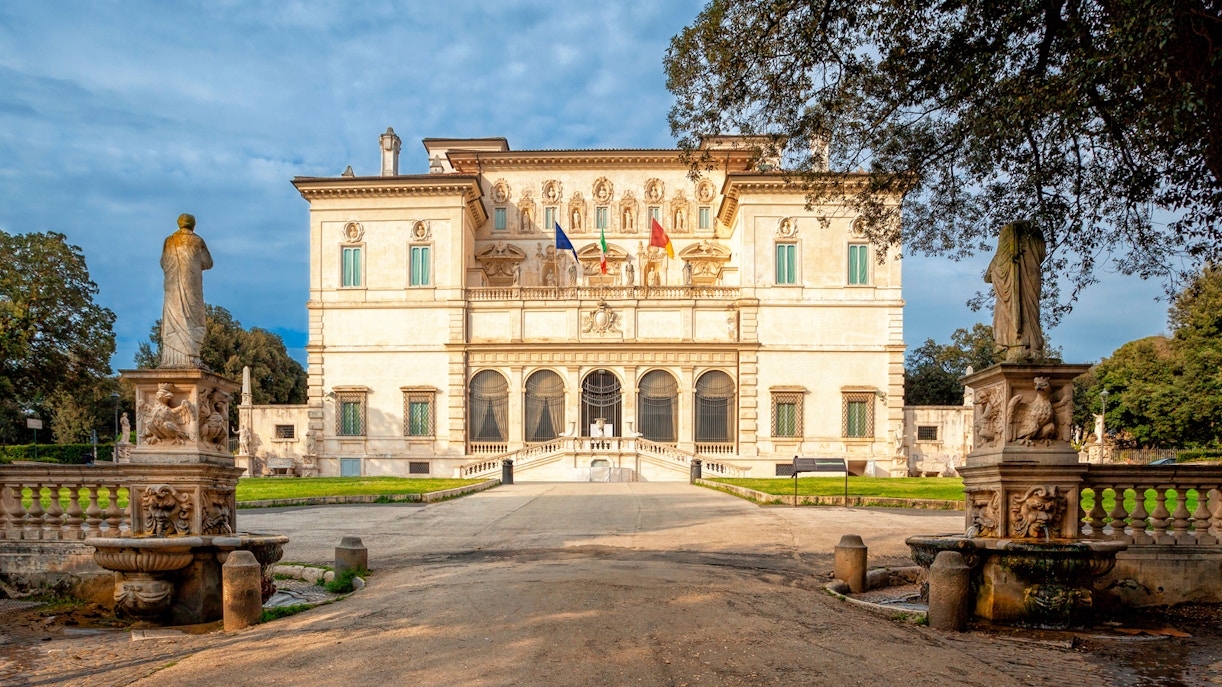
Tuesday to Sunday: 9am to 7pm
Last Entry: 5:45pm
Closed on: Mondays, December 25, January 1
Best time to visit
The best time to visit the Borghese Gallery is on weekdays, preferably in the morning or late afternoon to avoid crowds. In quieter seasons like fall or winter, the gallery offers a more serene experience, allowing for a better appreciation of the art without the rush.
Detailed Borghese Gallery hoursAddress: Piazzale Scipione Borghese, 5, 00197 Roma RM, Italy
Find on Map
Getting there
- By Metro: A-line Metro
Nearest Stop: Barberini Station - By Train: Mention the train line
Nearest Stop: Piazza di Spagna or Barberini station - By Bus: 910, 92, 89, 490, 495, 61, 160, 63, 83, 61, 160, 52, 53, 490, 495
Nearest Stop: Pinciana/Museo Borghese - By Car: 49.4 kilometers from Leonardo da Vinci International Airport.
Car Parking: There are several car parking facilities near the Borghese Gallery such as the Parcheggio Saba Villa Borghese, located only 3 minutes away. - By Hop-on Hop-off Bus:
Big Bus Tours:
Closest Stop: "Piazza Barberini"
Route: Red Route
City Sightseeing Rome:
Closest Stop: "Piazza Barberini"
Route: Red Route
I Love Rome:
Closest Stop: "Piazza Barberini"
Route: Red Route
Green Line Tours:
Closest Stop: "Piazza Barberini"
Route: Green Route
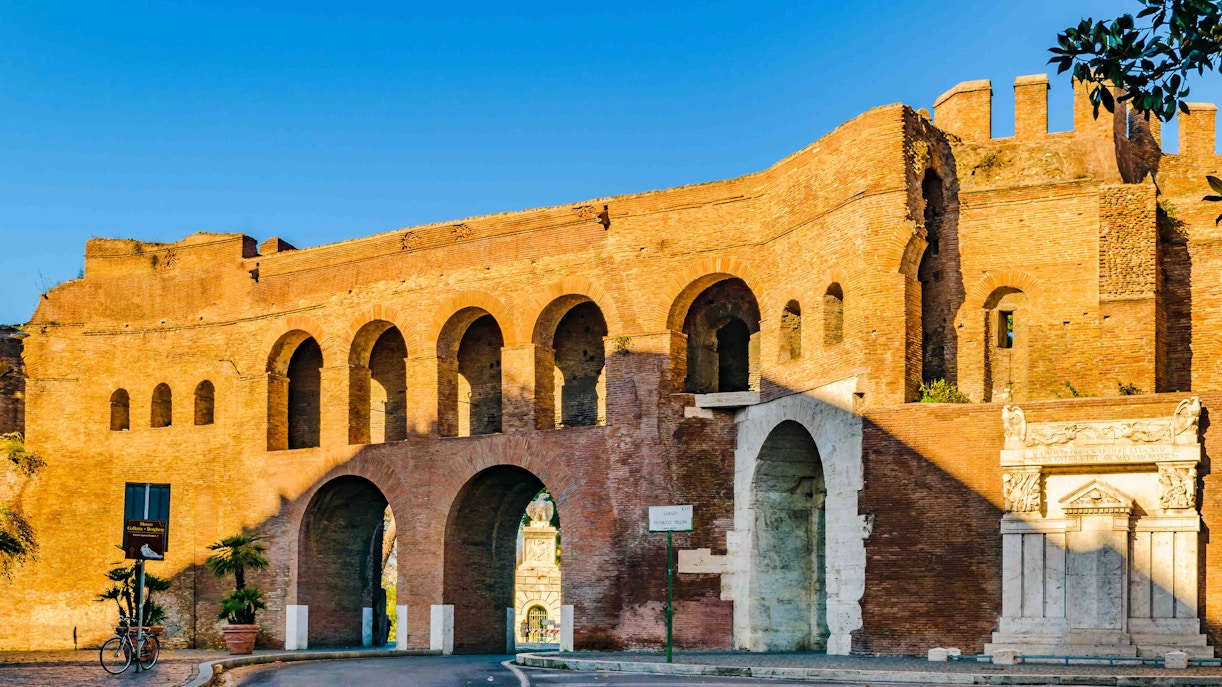
There are two main entrances used by the visitors to enter the premises:
- Gate near Porta Pinciana
- Gate near Piazza del Popolo

- Book shop: The museum bookshop is open from 8:30am to 7pm. You can get guidebooks in multiple languages, along with other literature like pamphlets, posters, souvenirs, art publications, and more.
- Locker room: You can store medium or large bags, umbrellas, selfie sticks, backpacks, or any prohibited items in the cloakroom.
- Audio guides: Purchase audio guides from the counter next to the ticket office.
- Cafeteria: Grab a quick snack like a brioche or muffin from the cafeteria between 9am and 7pm.
- Free Wi-fi for all throughout the location.

- There is a stair lift located to the left of the external staircase for people with reduced mobility, to enter the bookshop, ticketing office, etc.
- The entrance at Piazzale Scipione Borghese n. 5 allows direct entry to the sculpture floor of the museum, without having to take the stairs.
- Free guided tours for visitors with various degrees of disability are conducted by V.A.M.I. on reservation.
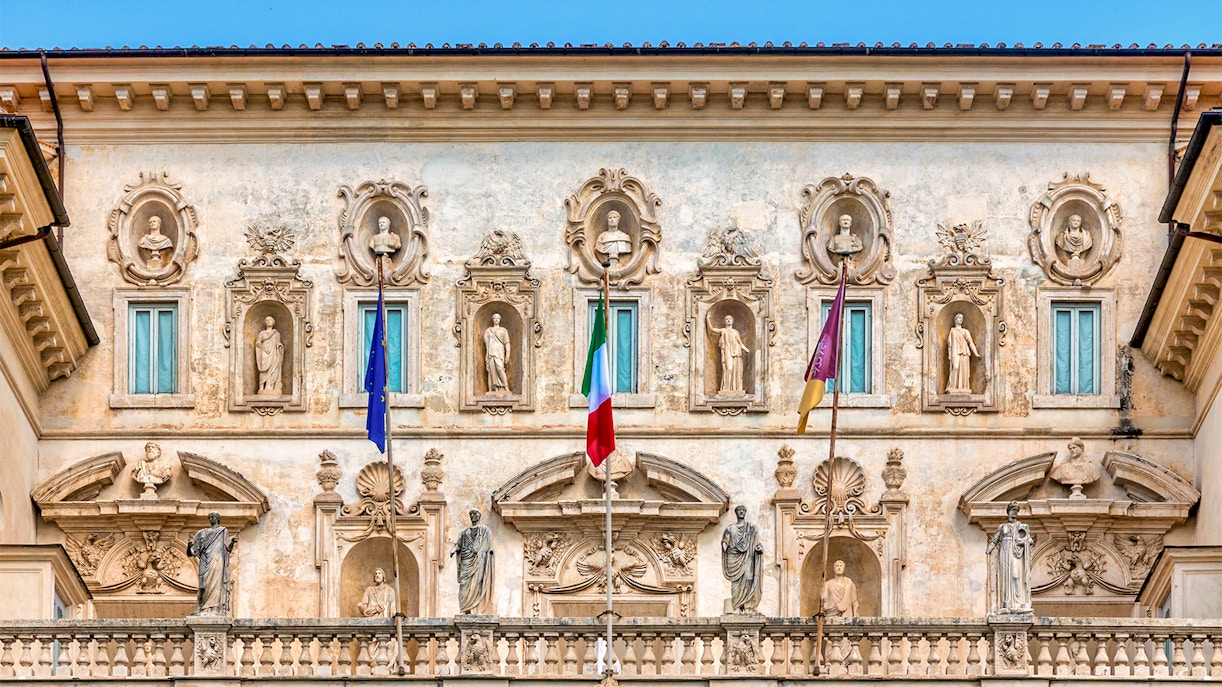
Louise Bourgeois: Unconscious memories
The current exhibition at the Borghese Gallery marks a historic first, showcasing the work of female artist Louise Bourgeois for the first time in the gallery’s history. The exhibition focuses on pieces that intertwine her memory with the collective and public memory of the museum itself. Bourgeois was deeply influenced by the psychoanalytical school of thought, and her initial visits to the Borghese Gallery keenly influenced her approach to imagining how old art forms interact with the new.
Last date of exhibition: September 15, 2024.

- Visitors should maintain decorum, avoid touching artwork, and follow staff instructions.
- Large bags, tripods, selfie sticks, weapons, flash photography, food, and drinks are not allowed.
- Visitors are only allowed to carry a small fanny pack or a purse, no larger than 21 x 15 cm inside. Bigger bags need to be left in the cloakroom.
- Brush up on the history and context of key artworks and artists before visiting. It enhances appreciation and understanding.
- After your gallery visit, take a stroll in the Villa Borghese Gardens surrounding it. It's a serene and beautiful spot to unwind.
Beyond Borghese Gallery

Colosseum
The world’s largest amphitheater and an iconic symbol of Rome, the Colosseum was once the site of gladiatorial contests.
Book Colosseum tickets
Vatican Museums
At the Vatican Museums, marvel at Michelangelos’ frescoes at the Sistine Chapel and gaze at vast art collections, including Raphael’s Rooms, The Gallery of Maps and more.
Book Vatican tickets
Spanish Steps
The Spanish Steps are a grand staircase in Rome leading from the Piazza di Spagna below to the Trinità dei Monti church at the top. They're famous for their elegance and are a popular spot for tourists to relax and enjoy the city views.
Frequently asked questions about Borghese Gallery tickets
Borghese Gallery tickets grant access to the museum's renowned art collection, showcasing masterpieces by Bernini, Caravaggio, and other acclaimed artists. Depending on the ticket type, inclusions may vary — some tickets offer guided tours, whereas others offer access to other sites within the larger Villa Borghese estate like the Rome Bioparco.
As this gallery is packed with impressive artwork from top artists, there’s a lot to take in and you can feel overwhelmed. A guided tour will enhance your experience through an explanation of the highlights, their history and significance, etc. Guides are also happy to answer any questions you may have.
Yes, with your standard entry ticket, you have the option to choose an audio guide.
Entrance to the Villa Borghese estate and the gardens are free. However, just as the Borghese Gallery is a paid-entry-only complex within the estate, there are certain other attractions that can be accessed only via a paid ticket as well, like the Bioparco.
EU citizens between the ages of 18 and 25 get reduced entry. People with disabilities and their companion get free entry, as do members of the ICOM, students and journalists, etc.

